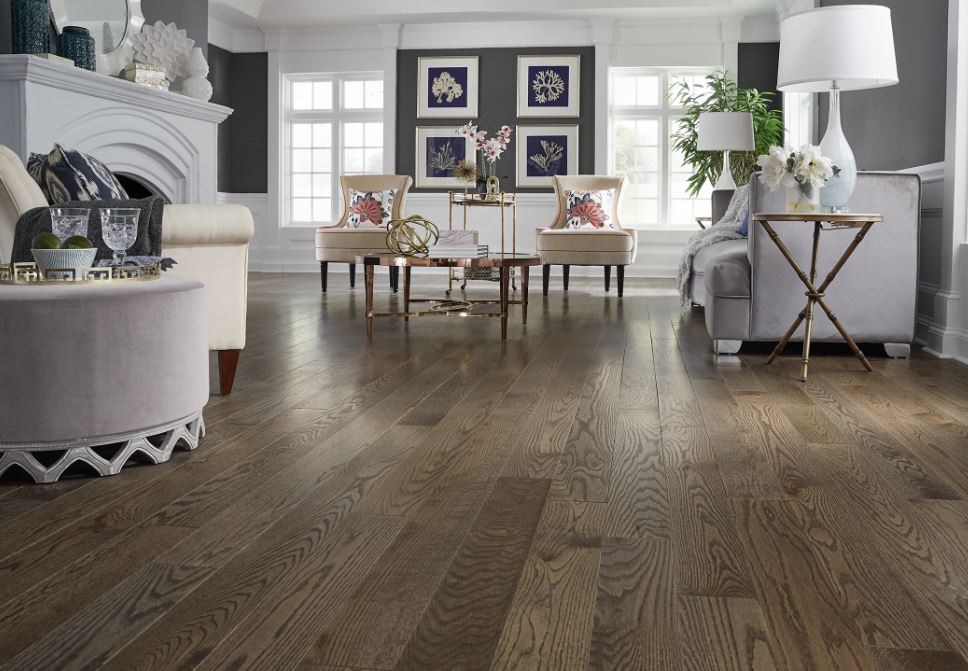In today’s world, creating a beautiful home goes hand-in-hand with making mindful, sustainable choices. One of the most impactful ways to live greener is by choosing eco-friendly flooring. Whether you’re building new, remodeling, or simply updating a room, selecting sustainable flooring materials can help reduce your carbon footprint while adding natural beauty and warmth to your space.
Let’s explore some of the best eco-friendly flooring options available today, and why they’re making waves in the world of interior design.
Bamboo Flooring: Fast-Growing and Durable
Bamboo is one of the top choices for eco-conscious homeowners, and for good reason. Technically a grass rather than a tree, bamboo grows back astonishingly fast—some species can regenerate in just three to five years. This makes it a highly renewable resource compared to traditional hardwoods, which can take decades to mature.
Bamboo flooring is available in a variety of styles, finishes, and colors, and it’s just as strong—if not stronger—than many hardwoods. Look for products certified by the Forest Stewardship Council (FSC) to ensure they’re harvested responsibly.
Pros: Renewable, stylish, durable
Cons: Sensitive to moisture, varies in quality depending on the manufacturer
Cork Flooring: Naturally Renewable and Comfortable
Cork is another renewable material that’s gaining popularity in green home design. Harvested from the bark of the cork oak tree, the process does not harm the tree itself, and bark regrows every few years. Cork flooring offers a soft, cushioned feel underfoot, making it ideal for spaces like kitchens where you stand for long periods.
It also naturally resists mold, mildew, and pests. Plus, cork has excellent insulation properties, helping regulate indoor temperatures and save on energy bills.
Pros: Comfortable, insulating, antimicrobial
Cons: Can fade in direct sunlight, sensitive to moisture
Reclaimed Wood Flooring: Giving Old Materials New Life
Reclaimed wood flooring is perfect for those who love the warmth and character of traditional hardwood but want a sustainable option. Instead of cutting down new trees, reclaimed wood repurposes lumber from old barns, factories, and warehouses.
Each plank tells a story, often showcasing unique imperfections, knots, and rich patinas that you simply can’t replicate with new wood. It’s an excellent way to blend history with sustainability.
Pros: Unique aesthetic, highly sustainable, durable
Cons: More expensive, requires careful sourcing
Recycled Tile: Beauty from Waste
Tile made from recycled materials—such as glass, porcelain, or even metal—offers a striking, sustainable flooring option. Recycled glass tiles, for instance, bring vibrant colors and textures that add personality to bathrooms, kitchens, and entryways.
Because they’re often made from post-consumer or post-industrial waste, recycled tiles help reduce landfill overflow. They are durable, easy to maintain, and work well with radiant floor heating systems.
Pros: Eco-friendly, colorful, durable
Cons: Can be slippery when wet, grout requires maintenance
Linoleum: The Original Eco-Friendly Flooring
Long before vinyl became popular, linoleum was the flooring of choice. Made from natural materials like linseed oil, cork dust, wood flour, and jute, linoleum is biodegradable and extremely durable. It’s naturally antimicrobial and antistatic, making it perfect for households with kids and pets.
Modern linoleum comes in a wide range of colors and patterns, allowing you to achieve almost any look you want—from classic to contemporary.
Pros: Renewable, durable, low maintenance
Cons: Can yellow over time if not properly sealed
Wool Carpet: Natural Comfort Underfoot
If you prefer the softness of carpet but want to stay eco-friendly, wool is your go-to material. Wool is a renewable resource that’s biodegradable at the end of its life cycle. It’s also naturally flame-resistant, hypoallergenic, and excellent at regulating indoor humidity.
Many wool carpets are dyed with natural, non-toxic dyes, making them safer for your family and the planet.
Pros: Soft, durable, natural flame resistance
Cons: Higher cost, can be sensitive to staining
Choosing the Right Eco-Friendly Flooring for You
When selecting sustainable flooring, consider the following:
- Certification: Look for certifications like FSC, GreenGuard, or Cradle to Cradle, which indicate that the materials have been responsibly sourced and manufactured.
- Durability: Choose materials that will last longer to reduce the need for future replacements.
- Maintenance Needs: Some eco-friendly options require specific cleaning or sealing routines—know what you’re signing up for.
- Local Sourcing: Materials sourced locally not only support nearby economies but also reduce the environmental costs associated with long-distance transportation.
By choosing eco-friendly Flooring Dubai, you’re investing in the health of your home and the planet. Plus, these beautiful options mean you never have to sacrifice style for sustainability.
In 2025, eco-conscious living isn’t just a trend—it’s a commitment to a greener, healthier future. Start with the foundation—literally—and you’ll feel good every time you step into your space.

